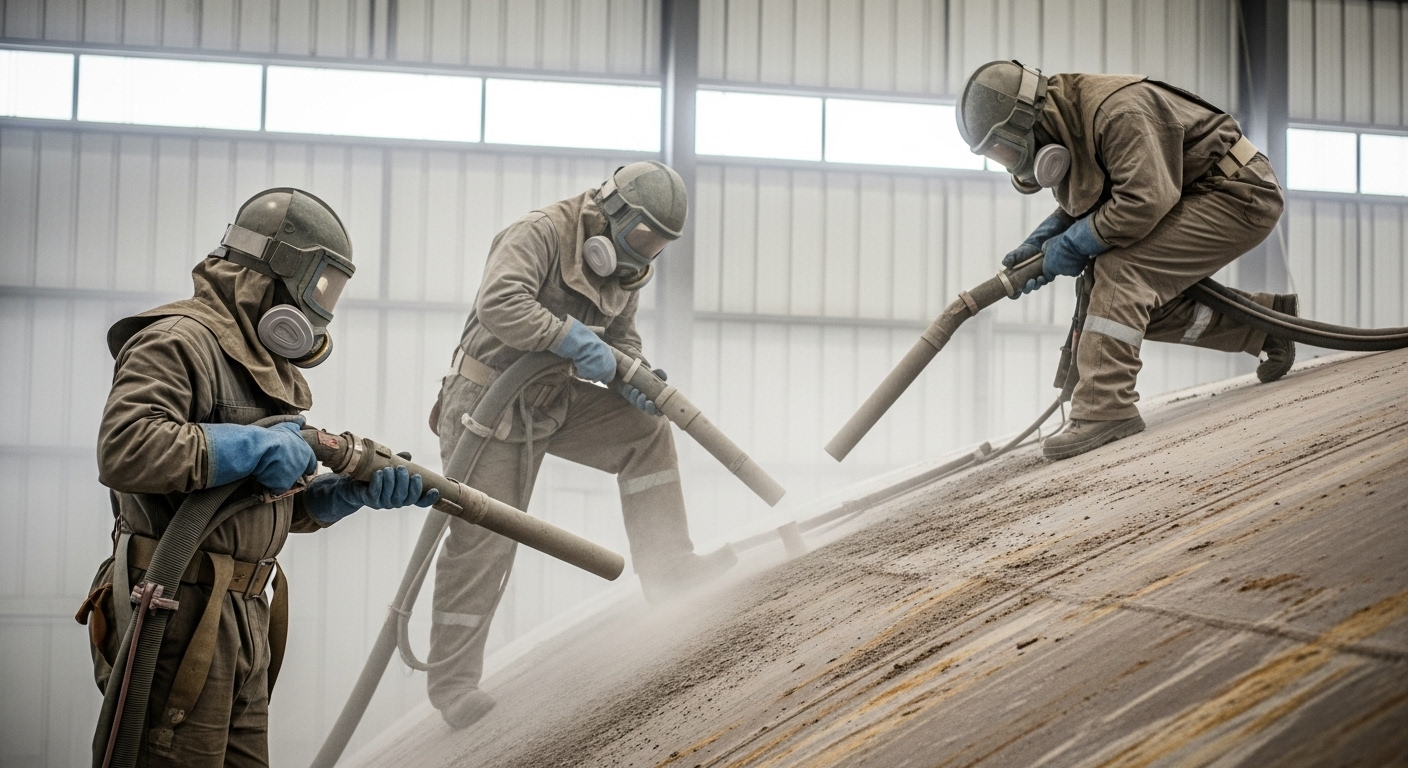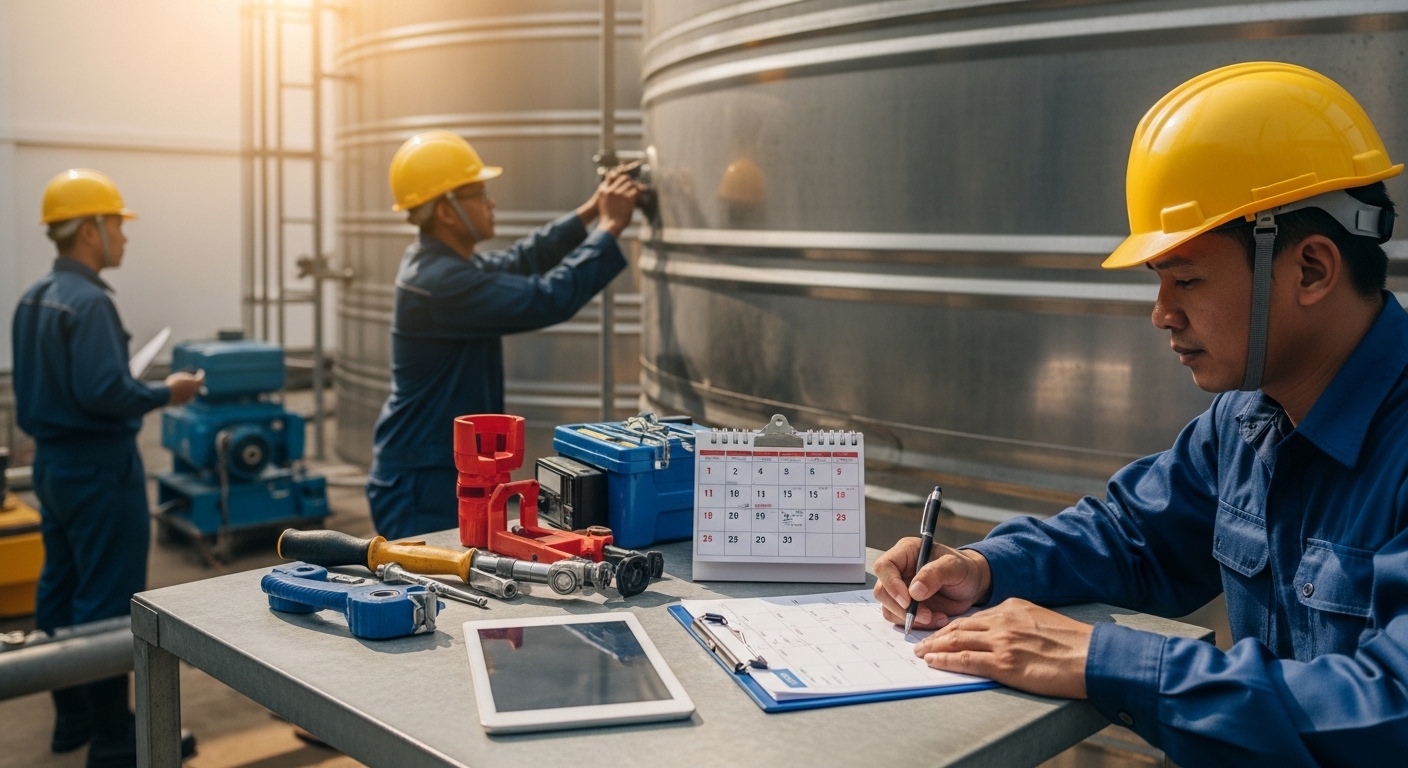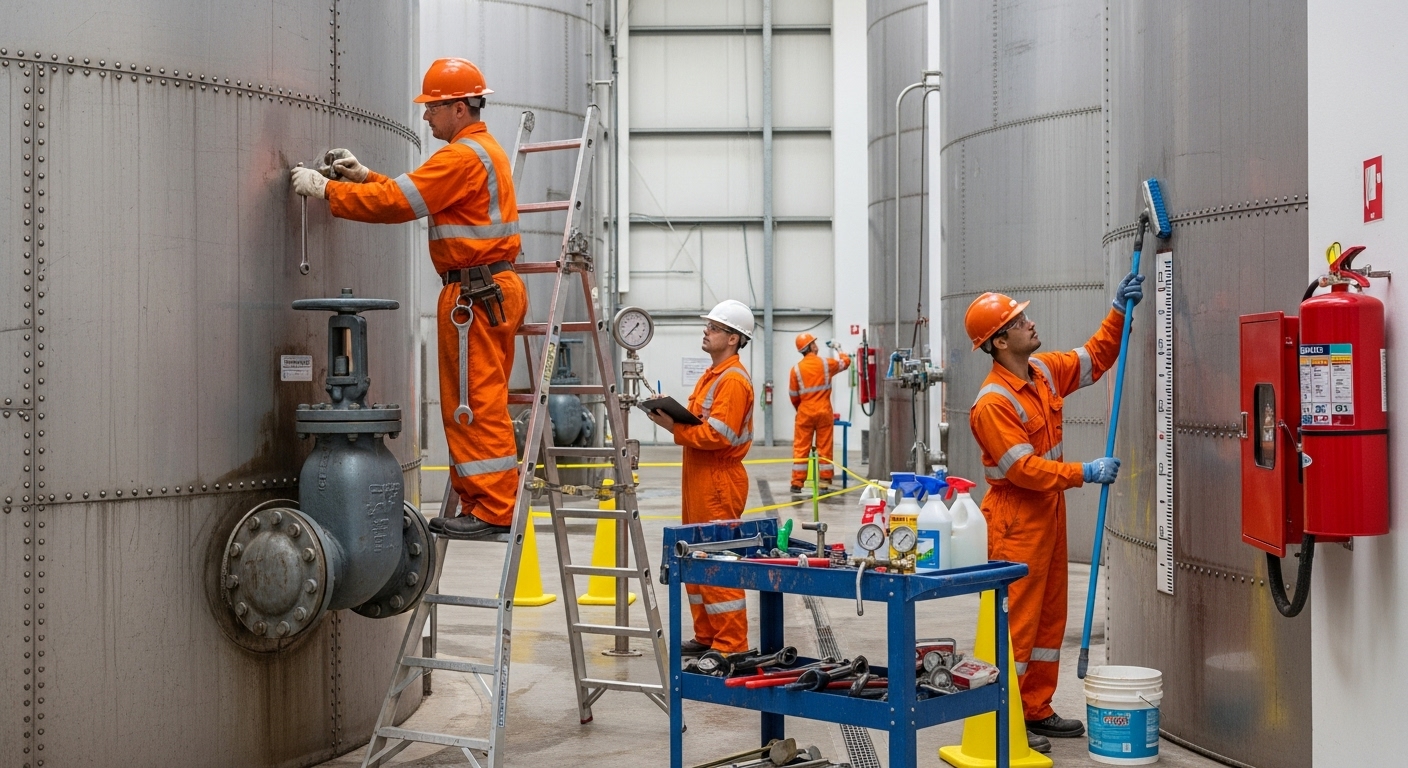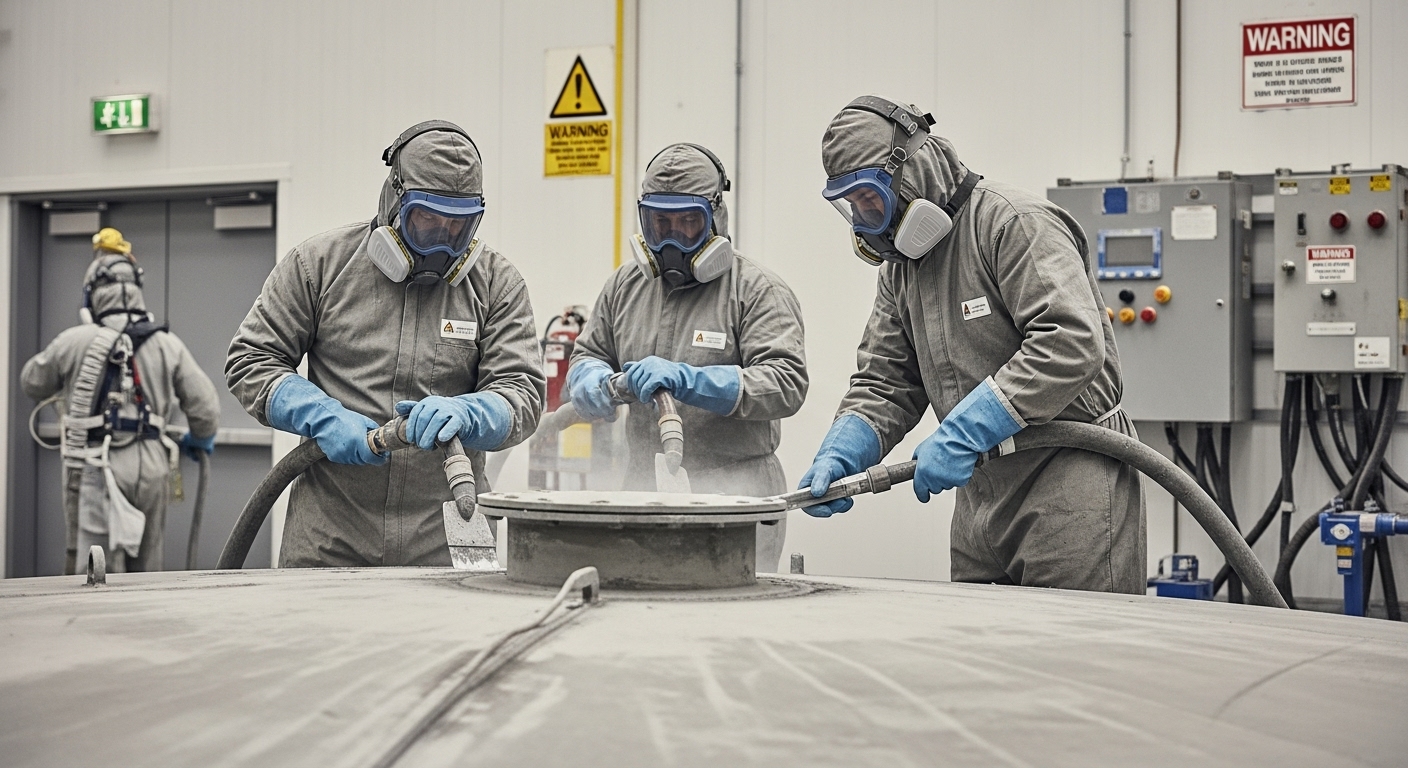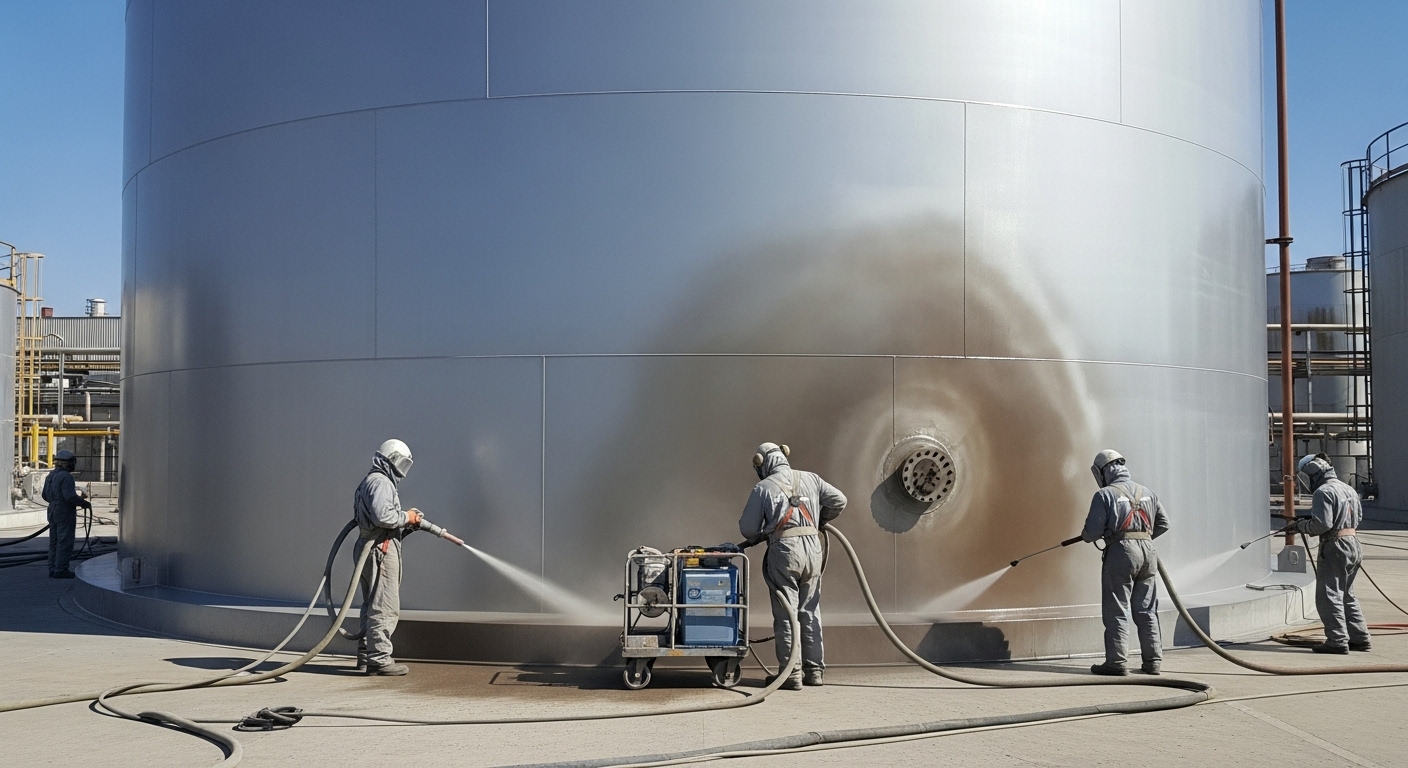When it comes to protecting water storage systems, one crucial step often determines whether the coating lasts for years or fails prematurely: proper professional water tank sandblasting. Sandblasting isn’t just about blasting away rust or old paint; it’s about restoring a surface to the right condition so new coatings can bond, protect, and perform as intended.
Communities rely on clean, safe, and well-maintained tanks for their water supply, and that makes the preparation process just as important as the final paint job. Think of sandblasting as laying the foundation for a building. Without a solid base, everything else crumbles.
In the same way, no matter how advanced your paint or coating system may be, it won’t last without proper surface preparation. That’s why professional sandblasting isn’t a luxury—it’s a necessity. This guide breaks down the sandblasting procedures, techniques, and checks that ensure your tank remains reliable and durable for decades.
Understanding The Professional Water Tank Sandblasting Approach
What separates professional water tank sandblasting from a rushed job is the precision, training, and careful execution behind every step. This process goes beyond simply cleaning the tank—it creates the right surface profile to meet coating specifications and ensure long-term adhesion.
Experts follow standardized sandblasting procedures, guided by cleanliness standards like those outlined in SSPC. Before the first grain of abrasive material ever touches the steel, teams evaluate the tank’s current state. From structural wear to rust scale, a complete assessment defines the blasting requirements and ensures all safety requirements are in place.
Skipping this step risks uneven blasting, weak adhesion, and future coating failure. With years of practice, professionals know that blasting is not just about force but also about balance. Choosing the right blasting techniques, controlling air pressure, and selecting appropriate media selection all factor into a process that transforms surfaces into ideal canvases for protective coatings.
Step-By-Step Breakdown of The Sandblasting Procedures for Water Tanks
Professional sandblasting relies on a structured sequence of steps to get results that last. Here’s a closer look:
Initial Tank Cleaning Process
Before blasting, the surface is cleared of dirt, grease, and biological growth. This pre-cleaning ensures abrasive media can contact the steel directly without interference.
Containment Procedures
To protect workers and the environment, blasting areas are sealed with tarps or containment systems. This prevents abrasive dust from escaping and ensures compliance with environmental considerations.
Abrasive Blasting Process
Using controlled pressure, chosen abrasives are propelled against the steel. Each pass is carefully monitored to meet the correct surface profile for maximum coating adhesion.
Inspection & Standards Check
Surfaces are inspected for quality control measures, ensuring that rust, mill scale, and old coatings are completely removed. This guarantees that the tank meets industry surface preparation methods and cleanliness standards.
Final Preparation
Before coatings are applied, the tank is re-checked for dust or debris to make sure nothing compromises the paint bond.
Why The Abrasive Blasting Process Matters for Coating Longevity
The abrasive blasting process is more than a step—it’s the very heart of preparation. If done correctly, it guarantees that the new protective system bonds tightly and resists peeling, blistering, or corrosion. If done poorly, even the most expensive coatings will fail.
Different abrasive materials—steel grit, garnet, or glass beads—are used depending on the surface preparation methods required. The wrong choice can create an unsuitable profile, either too smooth for adhesion or too rough, leading to premature paint failure. That’s why trained professionals carefully handle media selection.
Equally important are the containment procedures and dust management. Not only do they safeguard workers, but they also prevent environmental contamination and costly cleanups. When a sandblasting crew respects both efficiency and safety, the tank owner gains confidence knowing that the foundation for the coating system has been executed with precision and responsibility.
Linking The Tank Cleaning Process to Quality Assurance
It’s easy to underestimate the role of the tank cleaning process, but without it, blasting results fall short. Residues like oil, biological film, or scale can interfere with abrasive impact. Thorough cleaning ensures that blasting achieves full contact with bare steel, which is essential for long-term coating performance.
This is where quality control measures come into play. Inspectors use tools to verify surface cleanliness and confirm that the steel meets defined cleanliness standards. The smallest trace of contamination can trigger premature failure, which makes inspection non-negotiable.
Professional crews also track safety requirements during the cleaning and blasting stages. By following structured checklists, they prevent oversights and keep workers protected throughout the project. Together, cleaning and sandblasting create a synergy that extends coating performance and avoids expensive rework.
Critical Surface Preparation Methods That Extend Tank Life
Surface prep isn’t one-size-fits-all. Different surface preparation methods are chosen based on tank age, coating specifications, and operating conditions. For example:
- Full abrasive blasting for old tanks with heavy corrosion.
- Sweep blasting for newer tanks requiring light profile adjustment.
- Spot blasting for localized repair before recoating.
Each method aligns with quality control measures to ensure that no part of the tank is left unprotected. Combining these techniques with careful environmental considerations balances both performance and sustainability.
When owners see the link between preparation and protection, they understand that sandblasting is not an expense but a total project investment in safety and reliability.
The Role of Safety and Environment in Professional Water Tank Sandblasting
No professional job is complete without a focus on safety requirements and environmental considerations. From protective gear for workers to dust control systems, every measure is designed to minimize risks.
Sandblasting generates high levels of dust and debris, which is why containment systems and air monitoring are so crucial. Environmentally, responsible contractors prioritize waste collection and safe disposal. This prevents contamination of surrounding soil or water and aligns with modern sustainability practices. By factoring in these considerations, sandblasting crews not only deliver quality results but also demonstrate respect for the communities relying on these tanks.
Why Surface Prep Is the Foundation of Protection
No paint job lasts if the surface beneath it isn’t prepared correctly. Professional water tank sandblasting is the foundation that determines whether your tank will enjoy decades of protection or face premature coating failure. From choosing the right sandblasting procedures to ensuring rigorous quality control measures, every step is essential.
Owners who view sandblasting as part of a larger total project investment see significant returns in reduced corrosion, longer coating life, and improved water safety. With the added focus on environmental considerations, safety requirements, and quality assurance, today’s professional sandblasting practices balance performance with responsibility.
If you want reliable, lasting results, don’t settle for shortcuts. Experience Professional Sandblasting Standards and protect your tank, your community, and your future with a process designed for excellence.


